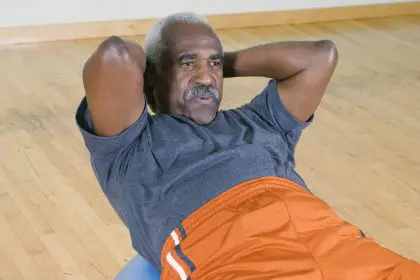Blood pressure medication does more than just lower numbers — it provides critical protection for your brain and could save your life
The silent danger lurking in your arteries
High blood pressure hides quietly in your body, often without a single symptom to warn you of its presence. Yet this stealthy condition affects nearly half of American adults, dramatically increasing their risk of experiencing a devastating stroke. The danger comes from the relentless pressure against artery walls, which gradually weakens blood vessels throughout the body, including the critical arteries feeding your brain.
When blood pressure remains elevated over time, it transforms normally smooth, flexible blood vessels into damaged, narrowed pathways prone to blockage or rupture. Most concerning is that many people remain unaware of their condition until serious complications occur. Regular monitoring reveals these hidden dangers before they cause irreversible damage.
Recent research has shown that even moderately elevated blood pressure can increase stroke risk by 50% compared to those with normal readings. For those with severely high readings, that risk multiplies to four times greater likelihood of experiencing a stroke. This explains why doctors consider hypertension treatment one of the most effective preventive health measures available today.
How stroke damages the brain in seconds
A stroke occurs when blood flow to part of the brain suddenly stops, either from a blockage (ischemic stroke) or bleeding (hemorrhagic stroke). Within minutes of this interruption, brain cells begin dying from lack of oxygen and nutrients. The effects can be devastating, depending on which brain area loses blood supply.
The brain consumes approximately 20% of the body’s oxygen despite representing only 2% of total body weight. This high energy demand makes it particularly vulnerable to blood flow disruptions. When a stroke occurs, an estimated 1.9 million neurons die each minute blood flow remains blocked, explaining why immediate medical attention is crucial.
Memory, speech, movement, and even personality can change instantly when stroke damages brain tissue. Recovery often requires months or years of therapy, with some functions potentially never returning to normal. This reality makes prevention through blood pressure control infinitely preferable to rehabilitation after damage occurs.
The 5 medication types that shield your brain
Medical science has developed several effective medication families that work through different mechanisms to lower blood pressure and protect against stroke. Each addresses specific aspects of blood pressure regulation:
- Diuretics flush excess sodium and water from your body, reducing overall blood volume. This simple yet effective approach decreases the pressure inside blood vessels by essentially reducing the amount of fluid they must contain. These medications often serve as first-line treatment due to their effectiveness and affordability.
- ACE inhibitors prevent the formation of angiotensin II, a powerful substance that constricts blood vessels. By blocking this constriction, blood vessels remain wider, allowing blood to flow more freely with less pressure. Research shows these medications reduce stroke risk by approximately 30% when used consistently.
- Calcium channel blockers prevent calcium from entering muscle cells in heart and blood vessel walls. Without calcium, these muscles cannot contract as forcefully, resulting in relaxed, widened blood vessels. This class works particularly well for older adults and those with certain coexisting conditions.
- Beta-blockers slow heart rate and reduce the force of each heartbeat. Imagine water flowing through a garden hose – by turning down the faucet pressure (your heartbeat), the force against the hose walls (your arteries) decreases. Though not typically first-choice medications, they provide important options for those who cannot take other medications.
- Angiotensin II receptor blockers (ARBs) directly block the effect of angiotensin II at receptor sites in blood vessels. While similar to ACE inhibitors, ARBs tend to cause fewer side effects like coughing, making them excellent alternatives when ACE inhibitors aren’t tolerated well.
Your doctor selects the most appropriate medication based on your specific health profile, considering factors like age, race, other health conditions, and potential side effects. Many people require a combination of two or more medications to achieve optimal blood pressure control and maximum stroke protection.
The brain benefits beyond stroke prevention
Blood pressure medications provide protection extending far beyond stroke prevention. These medications help preserve overall brain health through multiple mechanisms that researchers continue to uncover.
Cognitive function depends on healthy blood circulation throughout the brain. When blood pressure stays controlled, tiny blood vessels deep within brain tissue maintain their integrity, delivering oxygen and nutrients essential for memory, learning, and decision-making. Studies tracking adults over decades show those with controlled blood pressure experience significantly less cognitive decline than those with untreated hypertension.
Vascular dementia, the second most common form of dementia after Alzheimer’s disease, develops directly from impaired blood flow to the brain. Blood pressure medications reduce this risk by maintaining healthy circulation. Research indicates consistent blood pressure treatment may reduce dementia risk by up to 20% compared to those with untreated hypertension.
Brain volume preservation represents another surprising benefit of blood pressure control. Imaging studies reveal that untreated high blood pressure accelerates brain shrinkage as people age. When properly treated, this abnormal shrinkage slows significantly, helping maintain brain structure and function throughout life.
Small vessel disease – microscopic damage to tiny blood vessels throughout the brain – contributes to problems with balance, walking, and thinking. Blood pressure medications help prevent this damage, preserving mobility and independence that might otherwise decline prematurely.
Why consistent medication use matters tremendously
Taking blood pressure medication exactly as prescribed delivers dramatically better protection than sporadic use. Research comparing strict adherence versus occasional use shows those who take medication consistently experience 38% fewer strokes than those who take medications irregularly.
Blood pressure fluctuates naturally throughout the day, but untreated hypertension creates dangerous spikes that can trigger stroke. Medications provide a protective buffer against these temporary pressure increases, but only when taken regularly. Missing doses allows these dangerous spikes to return, sometimes with greater intensity than before.
Long-term protection builds over time with consistent medication use. Studies tracking patients for decades show that those maintaining blood pressure control for years experience progressively lower stroke risk compared to those with periods of poor control or medication gaps.
Medication effectiveness depends partly on maintaining steady blood levels in your system. When doses are missed or taken irregularly, protection becomes unpredictable. This explains why doctors emphasize taking medications at approximately the same time each day whenever possible.
If side effects occur, alternative medications almost always exist. Never stop taking prescribed medications without consulting your doctor, as abrupt discontinuation can cause dangerous blood pressure rebounds. Instead, report concerns promptly so adjustments can be made while maintaining protection.
Lifestyle choices that enhance medication effectiveness
Blood pressure medications work most effectively when combined with heart-healthy habits. These lifestyle factors complement medication effects, sometimes allowing lower medication doses while maintaining excellent protection.
Sodium reduction provides one of the most powerful dietary approaches for enhancing medication effectiveness. Limiting intake to less than 2,300 mg daily (about one teaspoon of salt) allows medications to work more efficiently. Read food labels carefully, as processed foods often contain surprising amounts of hidden sodium.
Mediterranean-style eating patterns rich in vegetables, fruits, whole grains, olive oil, and lean proteins naturally lower blood pressure. Research indicates this eating approach can reduce blood pressure by an additional 4-11 points beyond medication effects alone. The combination of nutrient-rich foods with minimal processed ingredients creates a powerful anti-inflammatory effect that protects blood vessels.
Physical activity for at least 150 minutes weekly significantly enhances blood pressure medication benefits. Exercise strengthens the heart, improves blood vessel flexibility, and helps maintain healthy weight – all factors that contribute to blood pressure control. Even simple walking provides measurable benefits when done consistently.
Stress management practices like meditation, deep breathing, or yoga trigger the relaxation response, temporarily lowering blood pressure during practice and creating lasting improvements when performed regularly. These techniques complement medication by addressing the psychological components of blood pressure regulation that pills cannot reach.
Sleep quality significantly impacts blood pressure control. Adults consistently getting less than six hours of sleep show reduced medication effectiveness compared to those sleeping 7-8 hours nightly. Prioritizing good sleep hygiene enhances medication benefits while improving overall health.
The combination of appropriate medication with these lifestyle approaches provides the strongest protection against stroke. Rather than viewing them as separate strategies, consider them complementary parts of a comprehensive brain protection plan. When followed consistently, this combined approach significantly reduces stroke risk while enhancing overall quality of life.













